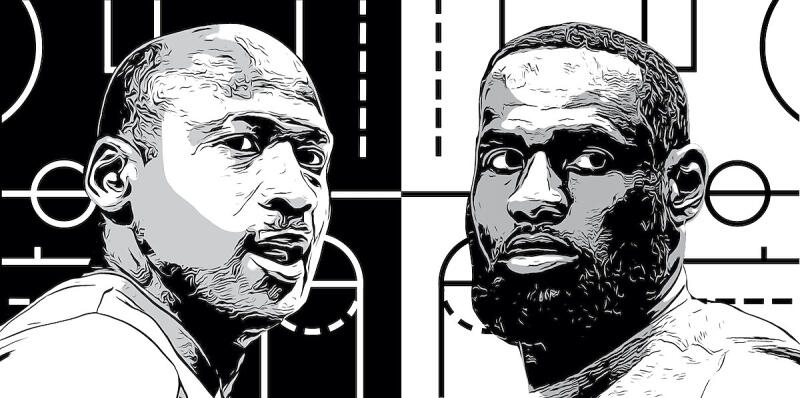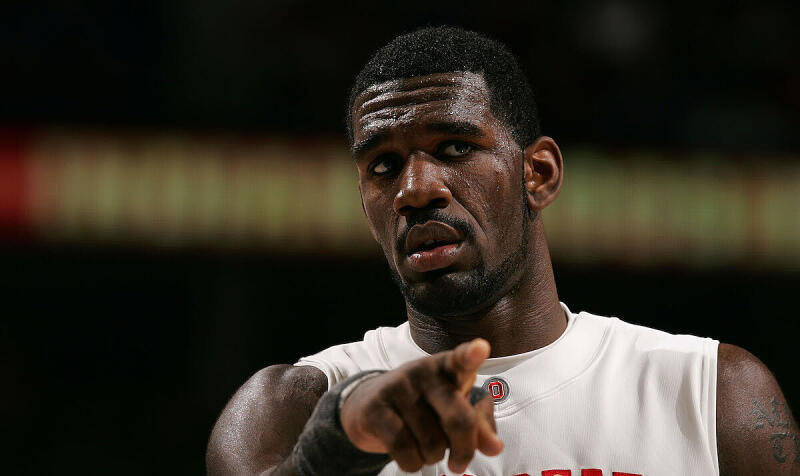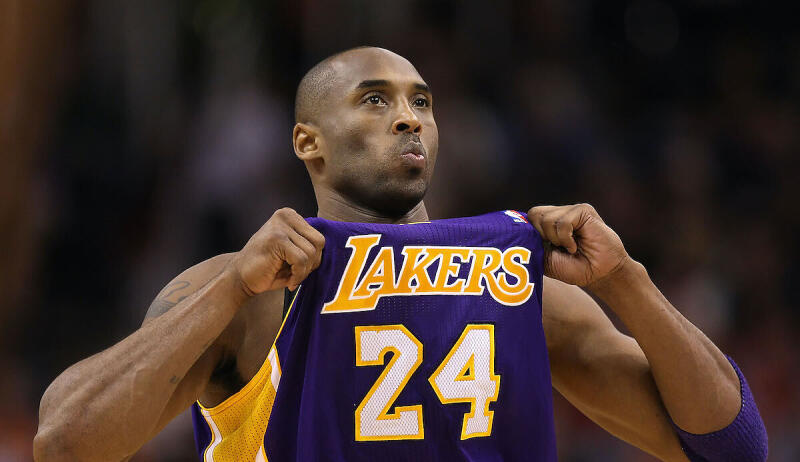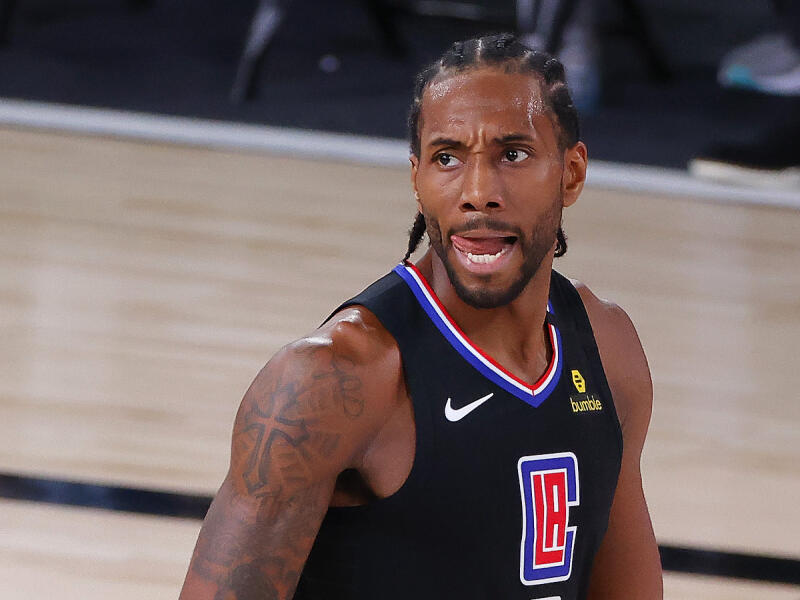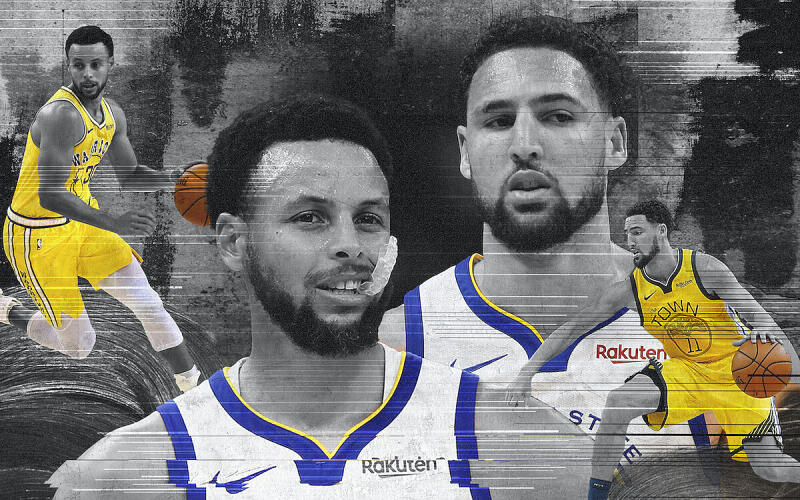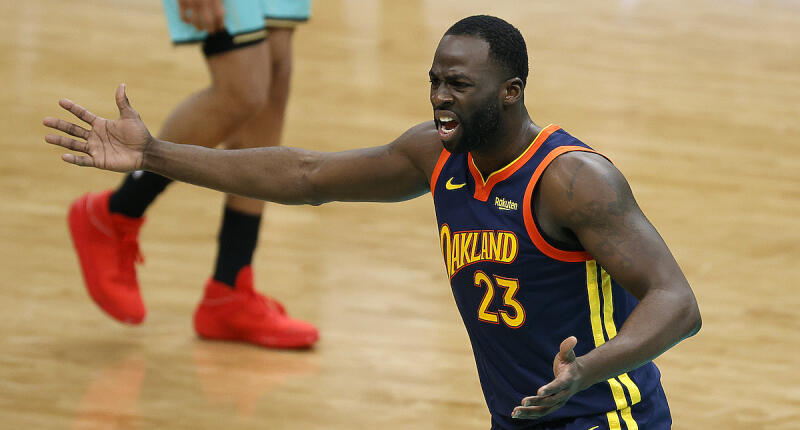The 10 Greatest Athlete Comebacks in Sports History, Ranked
The phrase “father time is undefeated” has been uttered far too many times in sports.
The NFL stands for the National Football League — and unofficially as Not For Long — further showing that athletes across every sport don’t have the luxury of taking multiple bites at the apple to make the most of their careers.
In light of Cam Newton’s recent resurgence in New England, Alex Smith's heroic return to gridiron from a gruesome leg injury and the genetically-gifted Adrian Peterson’s ongoing run at the age of 35, let’s look back at some of the best career revivals in sports history.
10. Michael Vick
Michael Vick was written off from the NFL and by society after he pleaded guilty for his role in a dogfighting ring and spent 21 months in a federal prison in 2007. The former fleet-footed No. 1 overall pick and face of the Falcons franchise was exiled from the league for two years until he reignited his career with the Philadelphia Eagles when he signed to be a backup in 2009.
By the following year, he started a three-year stretch as a starter in Philadelphia, highlighted by winning 2010 Comeback Player of the Year honors. Vick played in the league through 2015 and rehabilitated his image along the way. He now serves as a TV analyst for FOX Sports.
9. Brett Favre
Brett Favre went to rehab three times during the prime of his career as he struggled with addictions to alcohol and painkillers. As Favre started 297 consecutive games, which is still an NFL record today, he battled a bevy of bad habits along the way, including once taking 14 Vicodin during his 1995 MVP season.
The Hall of Fame and Super Bowl-winning quarterback stamped his legacy in Lambeau Field, but he’ll also be remembered for the magical season in Minnesota he deposited in 2009 at the age of 40.
Written off after a one-year stay with the Jets, the Ole Gunslinger strapped up his Wranglers and landed with the Vikings, leading the team to a 12-4 record. Favre racked up 33 touchdown passes, a career-low 7 interceptions and willed the team all the way to the NFC Championship Game in a thrilling overtime battle with the Saints. But his efforts fighting off a team eventually charged with Bountygate were not enough in the physically taxing contest.
8. Andre Agassi
Andre Agassi was the face of men’s tennis in the United States in the early 90s. It appeared he could do no wrong — he was winning grand slams and gold medals in the Olympics, starring in ads for brands like Canon and married to actress Brooke Shields.
Outside of the court, the Armenian-American icon’s life was falling apart, largely due to his use of crystal meth. By 1997, Agassi nose-dived in the world rankings to No. 141 and was separating from Shields.
Agassi got his Hall of Fame career and life back on track and returned to glory by 1998, winning the French Open and U.S. Open while also reaching the Wimbledon final. He also reached four consecutive Grand Slam finals from 1999 to 2000.
By the time he retired in 2006, Agassi won eight Grand Slam titles, five of which came after his dark year in 1997. In retirement, he and wife Steffi Graf have changed the lives of children by providing them education through the Andre Agassi College Preparatory Academy in Las Vegas.
7. George Foreman
Before George Foreman became the cherubic lean-mean, fat-reducing grilling machine sensation, he was a mean-mugged fighter roasting boxers as one of the best heavyweights to ever step into the ring.
Foreman retired from boxing at the age of 28 in 1977 having already beaten Joe Frazier twice, as well as Ken Norton and Ron Lyle. He also had a loss to Muhammad Ali in one of the most memorable fights of his era. By 1987, the 38-year-old Foreman reconsidered his decision and embarked on a path to become the heavyweight champion once again. By 1994, he accomplished the feat when he scored a come-from-behind knockout of the undefeated Michael Moorer two win the IBF and WBA titles. At the age of 45, Foreman became the oldest heavyweight champion in boxing history, a record that still stands today.
Foreman retired in 1997 with a record of 76-5 and 68 KOs. By 1999, he leveraged his global likeness and sold his name for $137.5 million in cash and stock so that the houseware company Salton could sell food-preparation products using his name and image.
6. Tiger Woods
Tiger Woods was atop golf until his life and career came crashing down on Thanksgiving weekend in 2009 when he was involved in a single-car accident. It soon came to light that Woods’ extra-marital affairs with a pack of women would lead to a divorce from his wife and the slew of sponsors who endorsed him. He spent 45 days in a clinic and did not return to golf until the 2010 Masters. He didn’t score another PGA Tour victory until 2012, and nagging back problems that needed surgery in 2014, twice in 2015 and once in 2017 was a telling sign that Woods was a shell of his former self.
Woods was constantly missing tournament cuts and his short game was nowhere near his prime. In 2017, Woods was arrested on a D.U.I. charge. A toxicology report found the active ingredient for marijuana, two painkillers and two sleep drugs in his system.
By 2018, Woods started showing a glimpse of his previous prowess, placing as the runner-up in the PGA Championship. By the time the Tour Championship came around, he’d returned to peak form and secured his 80th career victory on the PGA Tour.
Woods won the Masters for his fifth green jacket and 15th major title in April 2019, his first in 11 years.
5. Ted Williams
Ted Williams is one of the greatest baseball hitters of all time, but one can only wonder how much more historic his resume would have been if he did not lose five seasons of his career due to military service in World War II from 1942 to 1945 and the Korean War from 1952 to 1953.
Teddy Ballgame hit for average (.344 lifetime career batting) and power (521 home runs) and is the last player to hit over .400 (.406 in 1941).
The Boston Red Sox left fielder had played four seasons and was coming off a campaign in 1942 in which he led the league in HR, RBI, runs, walks, batting average, OBP, slugging, OPS and total bases when he voluntarily enlisted in the Navy reserve.
Later that year, he was called to active duty. There, he would spend the next three years learning how to fly. Those skills were needed in 1952 when Williams was called from the inactive reserves to serve in the Korean War. He ended up flying a total of 39 missions and fully resumed his career in 1954.
By the time he retired in 1960, Williams was an All-Star every year after the Korean War, won two more batting titles and emphatically ended his career with a home run in his final career at-bat.
4. Peyton Manning
Peyton Manning was already a Super Bowl-winning, Canton-bound quarterback when a herniated disc in his neck required fusion surgery.
That forced him to miss the entire 2011 season at the age of 35. Many believed Manning would perhaps miss the rest of his career because he couldn’t feel his fingertips, and playing catch became impossible. The major injury forced the Indianapolis Colts’ hand. Equipped with the No. 1 pick, they drafted Andrew Luck and parted ways with Manning in an emotional press conference.
Soon after, Manning willed his way through rehab much to the surprise of the sports world, fully recovered and enjoyed a renaissance with the Denver Broncos from 2012 to 2015. His final four years in the NFL were highlighted by a 45-12 record as a starter, the 2012 Comeback Player of the Year Award, an MVP and single-season passing TD record with 55 in 2013, and two Super Bowl appearances, the last of which was a win before he retired.
3. Michael Jordan
Michael Jordan was the best basketball player on the planet when he had a self-imposed sabbatical after winning a third straight NBA championship in 1993, all for the love of baseball. Jordan went from the penthouse of being the NBA’s best player to riding the bus as a minor league outfielder. In 1994, Jordan was a full-time baseball player in the White Sox's Double-A affiliate, but it did not come with the same proficiency as the likes of two-sport stars Bo Jackson and Deion Sanders before him.
Jordan barely mustered a batting average to sit above the Mendoza Line at .202 and had 3 home runs and 51 RBI. Realizing that he offered more value as a sharpshooter than strikeout machine, Jordan jettisoned baseball and returned back to the Bulls midseason in 1995 at the age of 31. In his three full seasons with the Bulls, he won three more NBA titles and Finals MVPs, as well as three scoring titles and two league MVPs.
Jordan retired again in 1998, but not before returning at the age of 38 to play two seasons with the Washington Wizards from 2001 to 2003. Jordan was not a world-beater anymore at the time, but he more than held his own, averaging 21.4 over the last 142 games of his career.
2. Mario Lemieux
Mario Lemieux was one of the best hockey players of his era in the 80s and 90s, pocketing three Hart Trophies and six Art Ross Trophy honors during the regular season.
Lemieux was diagnosed with Hodgkin's lymphoma in 1993 and was forced to receive radiation treatments. That same year, he even underwent a second back surgery. After his battle with Hodgkin's was revealed, Lemieux announced that he’d have to step away from the sport to let his body heal. He played, however, until 1997 and retired at the age of 31 due to the physically taxing nature of the sport. Lemieux's mandatory three-year waiting period was waived when he was inducted into the NHL Hall of Fame that same year.
He soon transitioned into management as a part owner of the Pittsburgh Penguins.
Forty-four months after retirement, Lemieux returned to the ice at the age of 35 and played five more seasons through the age of 40, turning in separate seasons with 35 and 28 goals. The two-time Stanley Cup winner retired in 2006 having tallied 690 goals, 1033 assists and 1723 points.
1. Muhammad Ali
Three-time heavyweight champion Muhammad Ali is one of the most iconic athletes of the 20th century because of his accomplishments in and out of the boxing ring. The outspoken and flashy fighter formerly known as Cassius Clay shook the status quo in the 1960s with his prodigious pugilistic power, paired with a punch for political activism.
For a three-and-a-half-year stretch during the prime of his career from 1967 to 1970, Ali was exiled from boxing due to his beliefs, even though he was an undefeated U.S. Olympics gold medalist who had beaten the likes of Sonny Liston, Floyd Patterson and Archie Moore.
Ali used his platform and awareness to bring light to the racial injustices Black people were facing at the time, ugly truths that still exist today.
Soon after Ali mended the fences and returned back to boxing, he went on to fight in some of the most memorable matches in the history of the sport, highlighted by trilogies with Joe Frazier and Ken Norton, finishing with a 2-1 record in each, as well as a resounding knockout win to hand George Foreman his first career loss.
The Greatest retired in 1981 with a record of 56-5 and 37 KOs. His later years in life led to a gradual decline in health due to Parkinson’s Disease until his death in 2016 at the age of 74.
Photo: Getty Images/Lines Illustration
Our editorial content strives to be highly informative and educational to our audience, especially for visitors who are new or relatively new to analyzing and predicting sporting event results. All of our content is created by informed writers with backgrounds in their subject area and reviewed for omissions or mistakes.
Our editorial team is run by individuals with many years of experience in digital publishing, editorial, and content production. Our editorial content is always marked clearly in any instances where it may be sponsored by a third party, though it is still reviewed by our staff to ensure it remains consistent with our company mission.
- Popular
- Latest

